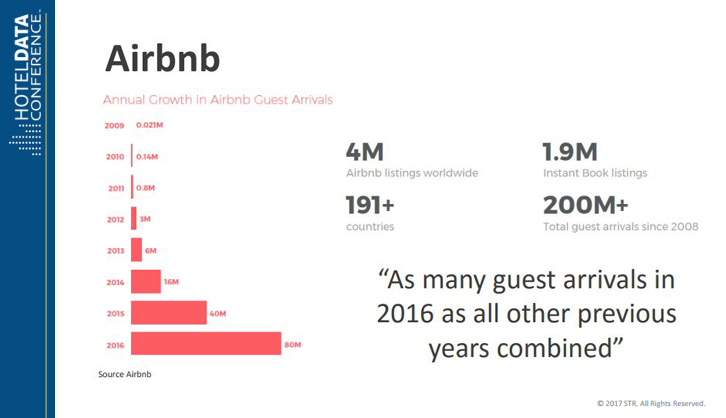For startups and budding entrepreneurs, nothing matters more than “growth”. It is the single most important metric that makes or breaks a new company. For that reason, almost every startup nowadays is looking for “growth hackers” to help them grow at ludicrous rates.
But hold on, what does growth hacking even mean? It sounds so made-up.
Well, yes, it is. The term “growth hacking” has become quite the buzzword in the digital marketing industry since its inception in 2010. Sean Ellis coined the term when he was having a hard time finding a replacement for himself. Basically, Sean was the go-to guy in Silicon Valley for internet companies that wanted to scale their user base in a quick and efficient manner. The problem was, when he wanted to leave a startup to pursue new ventures, it would be difficult for him to find someone with his level of passion for growth.
The applicants for his position did have impressive resumes with marketing degrees and experience but in Sean’s eyes, they weren’t a good fit for the post. He knew that for an early stage startup only one thing mattered: growth. So, in his blog post titled “Find a Growth Hacker for Your Startup”, he defined a growth hacker as “a person whose true north is growth.”

This is how the idea of a “growth hacker” was born. It’s true that a marketer can be as much of a growth hacker as an engineer. To put a twist on Anton Ego’s observation in Ratatouille:
“Not everyone can become a growth hacker, but a growth hacker can come from anywhere.”
The only thing required of a growth hacker is an obsession for growth. They must have an absolute focus on growth and growth alone. To them, nothing else should matter. To quote Aaron Ginn, former Head of Growth at StumbleUpon:
“Growth hacking is more of a mindset than a toolkit.”
Dave McClure, former marketing director at PayPal, understood the key differences between a growth hacking mindset and a brand marketing one. He published his view on startup metrics, which he nicknamed AARRR. It was affectionately called “Pirate Metrics” by users. He outlined them as follows:
- Acquisition: Getting people to your website from various channels
- Activation: Giving users a happy first experience
- Retention: Getting them to keep coming back for more
- Referral: Getting more users via existing ones
- Revenue: Monetizing user behavior
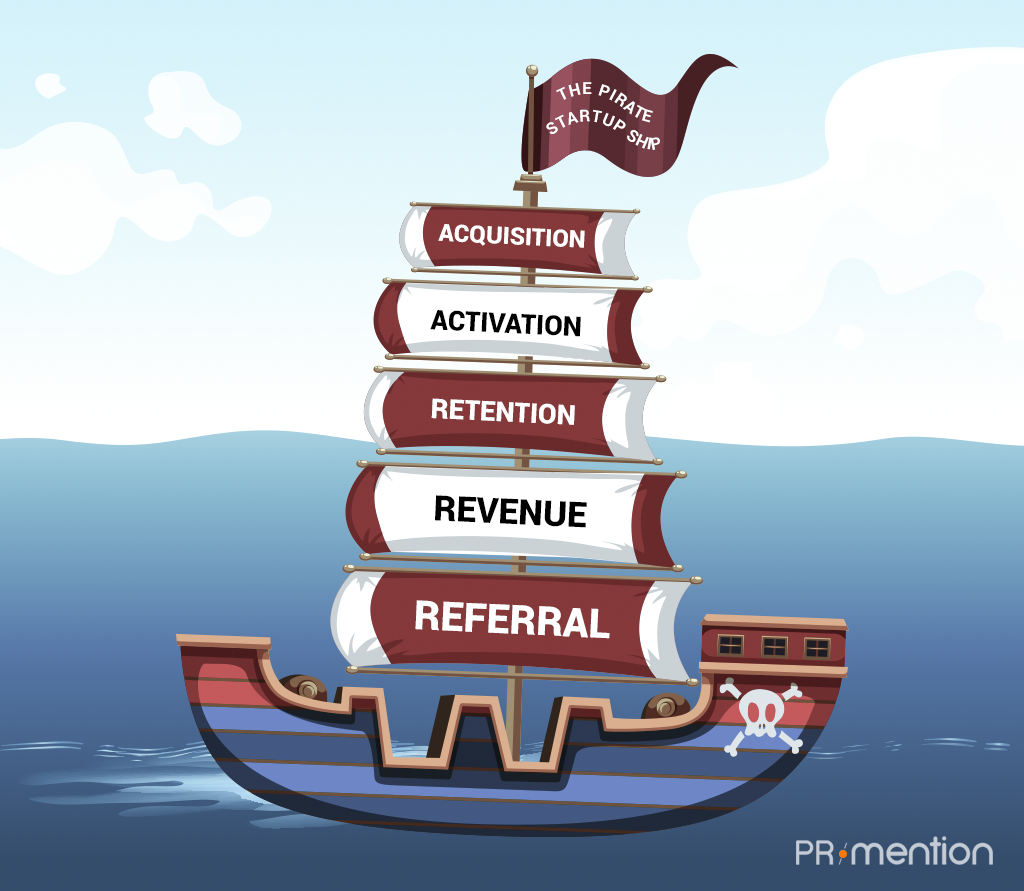
There are several massively successful examples of growth hacking done right. A few of the notable ones are Airbnb, HubSpot, Dropbox, and Uber.
Let us look at Airbnb’s growth hacking strategy in detail. Airbnb began when two guys in San Francisco couldn’t afford to pay their rent. So to make a few extra bucks, they thought they’d rent out three air mattresses in their apartment and also offer breakfast to the guests to make it sound like an appealing deal. In 2007, they made a simple website to raise awareness about the concept and soon three people showed up, each willing to pay $80 per night.
This got them thinking, maybe this had a business potential. They launched at South by Southwest (SXSW) and received more bookings. The earning potential, however, was limited to $200 per week. They needed to scale up. And paid advertising was an expensive solution.
So, they used an ingenious hack that changed their game forever. Keep in mind, it wasn’t easy and the same won’t work anymore. But it got them the initial boost that they needed.
They leveraged Craigslist, which at the time had around 50 million unique visitors each month. It was after they realized that their ideal target audience hung out on Craigslist to find something other than the standard hotel experience. (On a side note, this shows the importance of identifying your target audience early on.)
Craigslist didn’t make their API public, so Airbnb had to reverse engineer and make their product compatible without ever having access to the Craigslist codebase. But they made it work.
The result? People could now cross-post their Airbnb listings to Craigslist with one simple click.
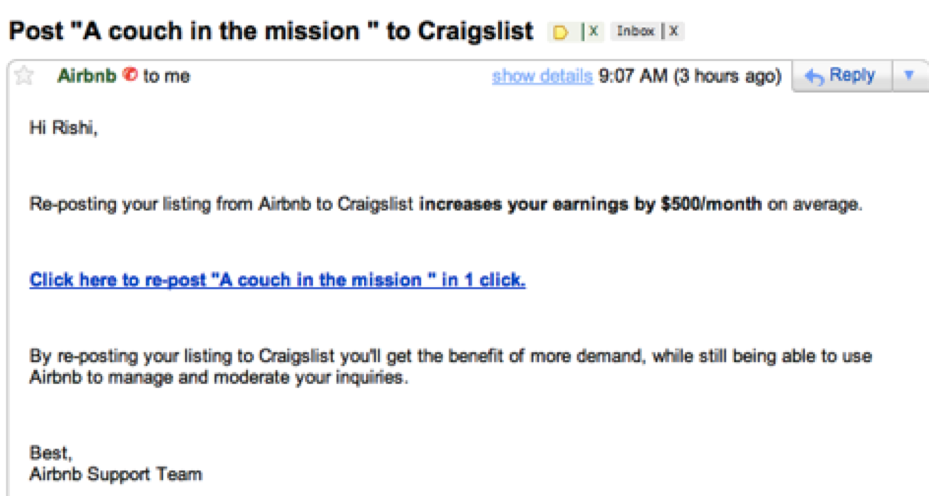
Even though they eventually had to discontinue their integration with Craigslist as this tactic wasn’t exactly an authorized one, their user base had already exploded. They got the much-needed initial traction and they were now in a position where they didn’t need a growth hack anymore.
They went on to raise hundreds of millions of dollars from multiple investors (including Ashton Kutcher) leading to their current valuation of at least $31 billion.
Now that you have a clear understanding of what growth hacking means, let us dive into the five proven strategies that startups such as the ones mentioned above have leveraged to boost their growth dramatically:
1. Virality/Viral Marketing
As the name suggests, viral marketing is all about making a marketing campaign that spreads on the internet like wildfire. It is every content marketer’s dream to create something so likable that it is shared and promoted widely. Even a small piece of content such as a meme or an infographic has the potential to cause a serious explosion of traffic (and potential leads) for the business if the content resonates with the audience.

A viral marketing campaign is designed to create a buzz on the internet and let the word of mouth do the actual “marketing”. As you can expect, this doesn’t just happen; it takes some serious psychology to get into the minds of the audience and to understand what they would be tempted to share right away.
A successful viral marketing campaign can have excellent advantages for your business:
- Reach and Credibility: It’s a chance for your brand to establish an almost instant credibility in the eyes of many. I mean, if you suddenly pop up on everyone’s feed due to an awesome video, people will realize that your other content (and thus your brand) is worth checking out as well. This is great for startups looking to get more traffic.
- Scalability: If you produce one piece of content that goes viral, it doesn’t necessarily have to stop there. Try to come up with ideas to convert it into a series of updates that people look forward to. Harness the full power of content marketing for your brand.
- Low cost: The simplest of ideas with minimal investment can work wonders. It is all about creating stuff people will want to share.
That said, there are a couple of downsides to keep in mind:
- Traffic quality: Sure, many people will check out your content (blog post, video etc.) or app and it’s good to have a huge surge of traffic every now and then. But chances are the traffic is not “qualified” in the sense that they won’t convert into actual, loyal customers.
- Negative buzz: To illustrate with an example, AT&T’s 9/11 marketing stunt is something that people will never forget. Enough said.

To avoid such fiascos and be successful with virality, there are a couple of tactics you can apply when devising a viral marketing strategy:
- Giving away free content: Sounds absurd, but don’t jump to conclusions just yet. “Free” is the most powerful word in an internet marketer’s dictionary. “Sale” and “Discount” are great, but “Free” rules. Giving away free stuff (content, products, services etc.) is how most viral marketing campaigns attract attention. It is how brands and startups establish trust and gain that important initial traction. Profit is not realized immediately and requires patience, but boy is it worth it. Look at the classic example of Hotmail. Their strategy was to give away free email addresses and services and simply attach a tagline at the bottom of every free message sent out: “PS: I love you. Get your free e-mail at Hotmail.” This simple tactic led to a monumental growth in their user base: it increased sign-ups to 3,000 per day.
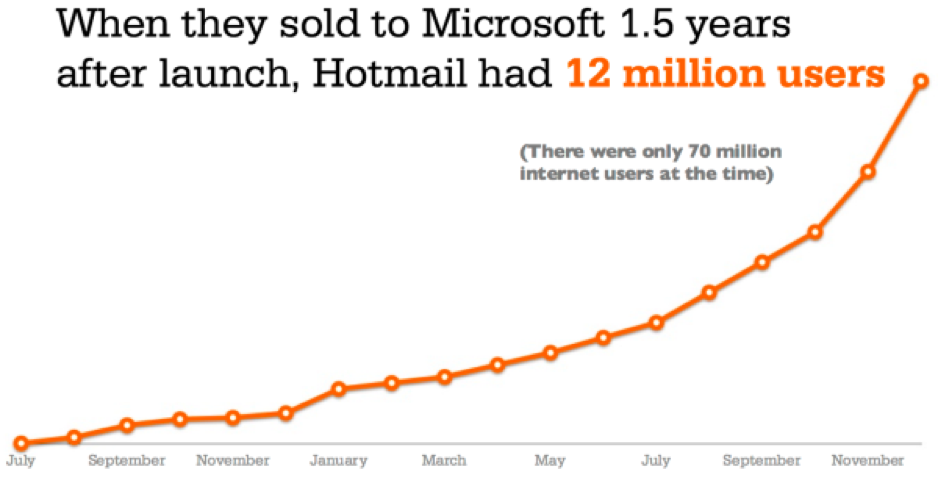 Another great example is Dropbox. When they first started out they experimented with paid advertising but soon found out that the cost of customer acquisition was much higher than the average lifetime value of the customer, which equated to a loss.So they came up with a referral strategy where they offered 500 MB of additional free storage space for each person that joined Dropbox via a user invite. Not only was this cheaper than paid advertisements, but referrals from friends were also more trustworthy than anonymous ads.Dropbox’s simple viral loop method that basically offers its users an incentive to share helped transform the firm from a startup into a multi-billion-dollar company.
Another great example is Dropbox. When they first started out they experimented with paid advertising but soon found out that the cost of customer acquisition was much higher than the average lifetime value of the customer, which equated to a loss.So they came up with a referral strategy where they offered 500 MB of additional free storage space for each person that joined Dropbox via a user invite. Not only was this cheaper than paid advertisements, but referrals from friends were also more trustworthy than anonymous ads.Dropbox’s simple viral loop method that basically offers its users an incentive to share helped transform the firm from a startup into a multi-billion-dollar company. - Ignite emotions: As a social media user, you may have noticed that most of the content that goes viral tend to have a controversial angle to it. Well, creating controversial content is risky from a brand perspective but it is a proven strategy for virality. For example, just look at the engagement (comments and shares) generated by this post. Most people use social media to voice their opinions, so producing a debate-worthy piece of content is a great way to increase engagement. It must ignite raw emotions and curiosity – in a positive way.
2. Content Repurposing
I’m sure that by now, you are aware of the importance of content marketing. But it is not always about creating new content. If you have already created a sufficient number of blog posts, infographics, and videos, it is time you leveraged it in other forms.
Content repurposing is the recycling of your existing work to reach and capture new audiences. When we talk about growth hacking, this strategy is quite literally a hack. Just look at some of the advantages of repurposing content:
- Reaching new audiences: Not everyone likes to read blog posts. Similarly, some people prefer listening to podcasts instead of watching videos. If you reformat your content to suit different types of audiences, you are able to extend your reach and make the most of your content marketing efforts.
- Identifying evergreen content: When you take a step back and look at all your existing content right from the start, you will realize what is evergreen and what needs to be updated. Some posts are timeless and will always remain relevant, others not so much. Give those outdated posts a makeover and stay ahead of the curve.
- Identifying popular content: Dig deep into your analytics and see which posts have been the most popular over the last year. Think about why those posts performed so well. Repurposing such content is a surefire way to succeed in your future content marketing efforts.
As you might expect, a content repurposing strategy is quite straightforward. For example, if you have covered a topic in a series of blog posts, you can repackage them into an “ultimate guide” or even an ebook. You might have to update the posts but it will definitely be worth it. Such comprehensive guides and ebooks are a great way to generate new leads and earn more email newsletter subscribers.
You can even convert your blog posts into a podcast series. Podcasts are gaining popularity due to their ease of consumption.
A very good example would be that of Benjamin Hardy. This guy was able to get 20,000 subscribers from Medium in just 6 months. How? He simply copy-pasted all of his blog posts to Medium – the world’s largest content publishing platform. I mean, talk about growth hacking!

However, you need to understand that Medium only entertains quality writing, and there is no getting around that. This strategy won’t work if your content isn’t up to the mark.
3. Gamification
You probably haven’t realized it yet, but you have been gamified. Don’t worry, it is not a scam. In fact, it is a brilliant and successful strategy used by marketers that works by giving users a better experience.
Gamification is the concept of using game mechanics or game design elements in non-game applications to make them more fun, engaging and exciting. It takes advantage of human psychology and its predisposition to engage in gaming. Don’t we all love getting awards, badges, leveling up, earning points, and ranking on leaderboards!
Simply put, gamification uses such game dynamics to provide positive reinforcement to users, motivating them to complete actions which they normally wouldn’t bother to complete.
Let us look at a couple of common examples so you can quickly relate to this strategy.
LinkedIn, the world’s largest professional social network, uses gamification to get you to complete your profile.

And I’m sure you would agree that this got you to complete your profile. Who doesn’t like to get badges?
Next, Starbucks.
Their rewards program is an absolute treat. The Starbucks mobile app uses stars and status to engage users, and at certain levels, you get rewarded with free drinks and food items. They are probably one of the most successful gamification examples in the retail and restaurant space.
You can find countless examples of brands which use such strategies to engage users and keep them coming back for more. It is getting easier and easier to apply gamification strategies to everyday apps due to technological advancements. At the end of the day, it really is about hitting the human psychology right.
So the takeaway is that this is a proven growth hack which you can easily apply to your brand and it will never go out of fashion.
4. Influencer Marketing
A buzzword in the digital marketing industry for quite a while now, influencer marketing is a tried and tested strategy for growth hacking startups. Look at the graph below indicating the rising trend of influencer marketing worldwide over the past five years.

Influencers are people who have a large social following in a particular niche on social media platforms or on the internet in general. They have the ability to advocate your product or services to their fanbase in an organic (natural) manner. To be classified as an “influencer”, it is not necessary to have a huge fan following in terms of the number of followers, but rather an extremely high engagement rate with the audience in that niche.
For example, if you are in the gadget industry, getting Lewis Hilsenteger from Unbox Therapy or Marques Brownlee from MKBHD to review your product and promote it on their social media channels can bring you an incredible exposure that simply cannot be achieved by traditional marketing tactics.
Note that in addition to a large follower count, these influencers have a remarkably high engagement rate with their audiences. They have established a high level of trust and authority in their niche. So, being a celebrity isn’t a requirement, but being considered a thought-leader is.

People are tired of paid advertisements interrupting their content experience on the internet. Influencer marketing is a more “organic” approach as it feels more authentic to see a real person talking positively about a product or a service than to see a display ad in the sidebar.
Word of mouth is far superior to any other marketing strategy out there. Let the numbers speak for themselves:
- 70% of teenage YouTube subscribers trust the opinions of influencers over those of traditional celebrities.
- On average, businesses generate $6.50 for every $1 invested in influencer marketing.
- 81% of marketers who have used influencer marketing judged it to be effective.
- 51% of marketers believe they get more loyal customers from influencer marketing.
- 59% of marketers increased their influencer marketing budgets last year.
Influencer marketing is happening 24/7 on all social media platforms. Brands both big and small are investing in this strategy. So how can you get into the mix?
It is not difficult at all. As always, it comes down to creating the right strategy. First, identify the perfect influencer for your niche. To do that, consider the following aspects:
- Social media reach: An Instagram user with 150K followers is obviously better than one with just 1.5K followers. But remember, it’s not just about the numbers; the influencer ought to have a high engagement rate.
- Budget: According to this source, 96% of influencers will charge $1,000 or less per sponsored blog post. Around 87% will charge $500 or less per post. Similarly, 96% charge $500 or less and 90% charge $250 or less per Facebook post. You get the idea: influencers don’t come cheap.
- Niche: This is extremely important. The influencer’s followers must be your target audience, otherwise, it’s all just a big waste of time and resources.
When you find the right influencer, you are ready to reach out to them. Generally, the first contact is made with an in-platform direct message. You switch to email once the conversation gets serious.
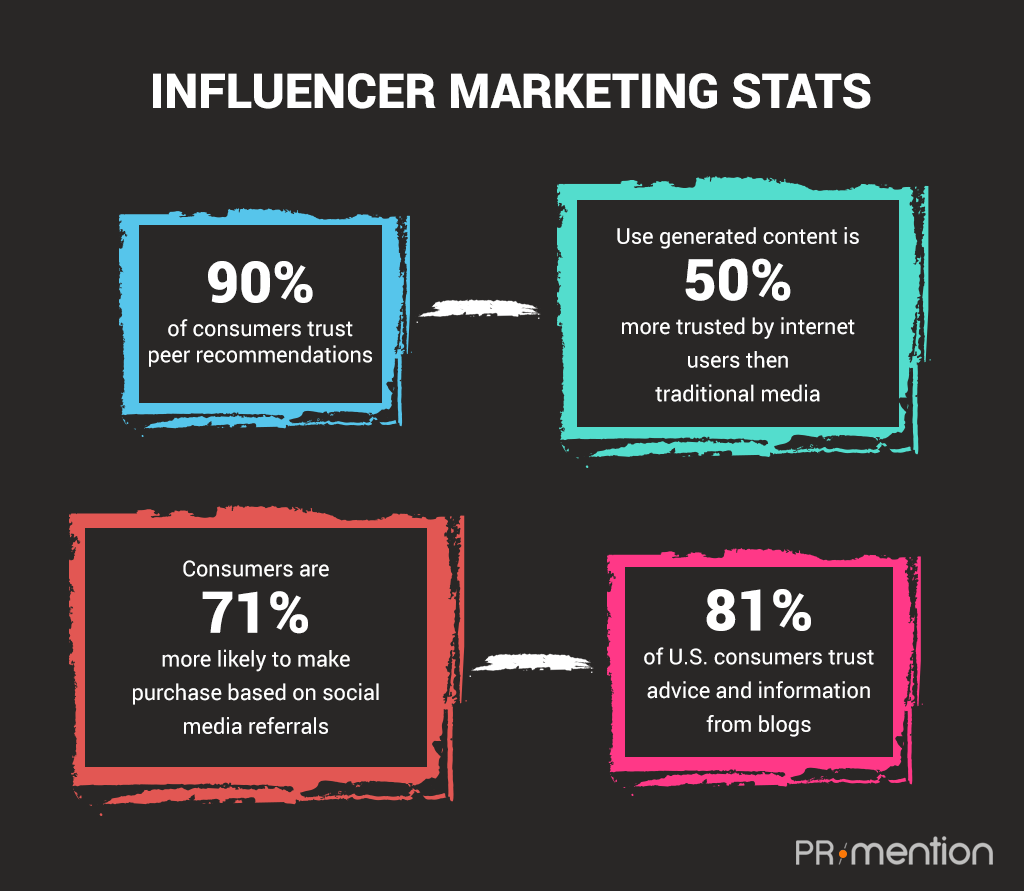
And that’s about it. If it’s in the influencer’s best interest and they can see it as being mutually beneficial, then you are pretty much good to go.
That said, can you guess who are the best influencers, regardless of the niche? They don’t charge you a dollar for promotion, and their say about your product has the most value.
That’s right, it’s the customers themselves. Your customers, clients, or users; whatever you call them, are at the top of the word of mouth pyramid.
Glowing reviews build the credibility of a brand. Conversely, a single bad review can harm a business. We have all been there, speaking to friends about their experiences with certain brands and checking out online reviews before deciding which restaurant to visit.
That is why I often say that customer advocacy is the holy grail of marketing.
5. Iterative Experimentation
Well, growth hacking is defined as:
“A process of rapid experimentation across marketing funnel, product development, sales segments, and other areas of the business to identify the most efficient ways to grow a business.”
Constant experimentation and testing are at the heart of a growth hacking strategy. All the proven strategies mentioned here are a result of experimentation. If you really think about it, marketing is all about testing. You run campaigns and measure results through analytics to determine what worked and what didn’t. In the next iteration (campaign), you try to further optimize the things that worked and improve on those that didn’t, or even ditch them altogether.
Before we go ahead with marketing jargon, it is important to understand why getting feedback early in the product development cycle is crucial to avoid unpleasant surprises later on.
To demonstrate, let us look at a couple of companies launched by Neil Patel:
When he decided to launch Kissmetrics, a behavioral analytics tool (for social media), he had a budget of more than a million dollars. He spent it all on building the product. It took a year to build the tool and when it was finally released, he learned that his prospective customers were happy with the metrics their social networks were already offering.
What it meant was that he had spent a million dollars and one year building a tool which was not needed in the first place. That is a bad, bad mistake you don’t want to repeat.
With his other venture, Crazy Egg, he had a completely different strategy. When he heard people complain about a problem – “I am spending so much money on paid ads, but I cannot see what my users are actually doing on my website. I don’t understand why the bounce rate is so high.” – he decided to come up with a tool that visually showed user behavior on a website via heatmaps.
He got the first version of Crazy Egg released in just a month. The idea was to just get the product out there as fast as possible while getting constant feedback to improve it along the way.
Within six months, Crazy Egg matured into a stable product that people actually wanted to buy. But wait, there’s more. By constantly releasing improved versions every month and allowing news websites to blog about it, they created enough buzz to get 10,000 people on the waiting list. Clearly, this iterative-feedback method is the way to go when launching a new startup based on a cogent idea.
So, coming back to our growth hacking strategy, what exactly does iterative experimentation encompass?
- A/B Testing: Also referred to as split testing, A/B testing is a method of website optimization in which two versions of a page – version A and B – are compared with each other in terms of their conversion rates using live traffic. The website visitors are segregated into two buckets and shown different versions of the same page. By tracking how visitors interact with the page – buttons clicked, videos watched, etc. – you can determine which version of the page is more effective.
 A/B Testing is simple to perform and very useful in optimizing websites at a page level or for individual page elements. It does not require a large amount of traffic to run and the results can be quantified pretty quickly. But as the name suggests, A/B testing is limited to two to four variables at a time.
A/B Testing is simple to perform and very useful in optimizing websites at a page level or for individual page elements. It does not require a large amount of traffic to run and the results can be quantified pretty quickly. But as the name suggests, A/B testing is limited to two to four variables at a time. - Multivariate Testing: This method has the same principle as split testing, but the number of variables compared simultaneously is higher and it reveals more information about how the elements interact with one another. As with the A/B test, traffic to a page is split between different design versions. The objective is to measure the effectiveness of each design combination on the ultimate conversion goal(s). Once a website has received enough traffic to run the test, the data from each design variation is compared to determine which is best, and also reveal the elements that have had the greatest positive or negative impact on a visitor’s interaction.
 Multivariate testing is very helpful in designing landing pages and call-to-action (CTA) buttons. The only drawback is the amount of traffic needed to successfully complete a test. If there are too many variables to be compared at once, then the possible combinations to be tested are very high and infeasible.
Multivariate testing is very helpful in designing landing pages and call-to-action (CTA) buttons. The only drawback is the amount of traffic needed to successfully complete a test. If there are too many variables to be compared at once, then the possible combinations to be tested are very high and infeasible. - Conversion Rate Optimization (CRO): It is the process of increasing the percentage of conversions on a website (or mobile app) by fostering ideas to improve page elements on the website and then validating those hypotheses through A/B testing and multivariate testing.
 When it comes to increasing conversions, there is always scope for improvement. The best companies are continuously iterating and improving their websites and mobile apps to create a better user experience and increase conversion rates. Conversion rate optimization is a great way to reduce customer acquisition costs by getting more value from the visitors/users you already have. For example, if a landing page on your website has a conversion rate of 20% and it receives 4,000 visitors a month, then the page will generate 800 conversions per month. If that conversion rate can be improved to 25% by optimizing various elements on the page, the number of conversions jumps to 1,000 per month.
When it comes to increasing conversions, there is always scope for improvement. The best companies are continuously iterating and improving their websites and mobile apps to create a better user experience and increase conversion rates. Conversion rate optimization is a great way to reduce customer acquisition costs by getting more value from the visitors/users you already have. For example, if a landing page on your website has a conversion rate of 20% and it receives 4,000 visitors a month, then the page will generate 800 conversions per month. If that conversion rate can be improved to 25% by optimizing various elements on the page, the number of conversions jumps to 1,000 per month.
Thus, constant ideation and experimentation is key to any growth hacking strategy.
Bonus: Measuring Growth/Success
If you just link your website with Google Analytics without knowing what growth hacking is and how it works, then you will only be fiddling around with numbers feeling good about yourself. The metrics will make you think you know what you’re doing, and the graphs will look very alluring.
Needless to say, if you cannot measure your growth after hacking, there is no point of growth hacking.
It is important to do this right. Being “data-driven” is not a fad but a systematic approach to tracking progress, measuring achievements, and charting a future course of action.
So, in this final section, let us look at the most important Key Performance Indicators (KPIs) that can help you measure your growth hacking campaigns. Of course, every business has different KPIs and this is not an exhaustive list, but it should point you in the right direction.
- Customer Acquisition Cost (CAC): It is the amount of money needed to acquire a new customer. For example, if you spend $100 on Google Ads and this gives you 2 new customers then your customer acquisition cost for this channel is $50. CAC for different channels can vary greatly so it is important to know this metric on a per channel basis. Moreover, once you know the CAC per channel then you can make estimates as to how much you should spend on that channel.
- Lifetime Value of Customer (LTV): The lifetime value of a customer is the expected amount of money you’ll make on someone throughout their entire chapter of usage with your product. For example, if people pay you $200 a month for your product, and stay customers for an average of 2 years, then your LTV is $200 x 24 (months) = $4,800. Segmentation of users is quite useful when calculating LTV because it is possible that certain segments of your users have a much higher or lower LTV than others.
- Revenue Per Visitor (RPV): The average amount of money made per visitor is called RPV. It is a very strong metric as it provides insights into which CTAs ultimately bring revenue.
- Viral Coefficient (K): A coefficient that defines how many new people are being brought to your product by existing users. If 100 users on average are bringing in 200 new visitors, then K = 2. Anything above K = 1 is a good sign that your product is growing virally. That said, do not focus too much on virality as it is not always feasible or even possible. It is more than possible to apply other strategies of growth hacking and still grow your startup quickly.
To evaluate such and many more important KPIs, there are various tools available at your disposal. The following are industry standard tools recommended for most businesses and startups:
- Viral Loops
- BuzzSumo
- Ahrefs
- Buffer
- Hootsuite
- Hoopla
- Upfluence
- TapInfluence
- Mailchimp
- Crazy Egg
- Kissmetrics
- HubSpot
- Marketo
- Unbounce
- Google Analytics
- Google Search Console
Final Thoughts on Growth Hacking
Judging by today’s cut-throat competition in nearly every industry and niche, growth hacking is not a “good-to-have” anymore. It is a must for startups looking to make their mark in their respective niche.
Make sure that your efforts are focused first on solving customer problems and then on increasing brand awareness. The road to customer advocacy is through customer satisfaction.
TL;DR:
Here’s a short summary of the post if you are short on time or couldn’t be bothered to read it all:
- Growth Hacking is more than just a marketing buzzword. First coined by Sean Ellis in 2010, a growth hacker is “a person whose true north is growth.”
- The startup metrics published by Dave McClure, also known as “Pirate Metrics”, outline the five stages of the marketing funnel as:
- Acquisition: Getting people to your website from various channels
- Activation: Giving users a happy first experience
- Retention: Getting them to keep coming back for more
- Referral: Getting more users via existing ones
- Revenue: Monetizing user behavior
- There are several hugely successful examples of growth hacking done right. A few of the notable ones are Airbnb, Uber, Dropbox, and Facebook.
- Viral marketing campaigns are designed to create a buzz on the internet and let the word of mouth do the actual “marketing”. Viral content can exponentially increase the reach of your brand, establish instant credibility, and can also be scaled up into a series of content.
- Giving away free content is one of the best ways to trigger virality. Also, note that almost every piece of “viral” content on the internet is viral because it is able to ignite raw emotions and curiosity of the user – in a positive way, of course.
- Content repurposing is a very straightforward growth hack which allows you to recycle and reformat your old work to target and capture new audiences. For example, a series of blog posts that cover a single topic very thoroughly can be repackaged into an “ultimate guide” or even an ebook. Such comprehensive guides and ebooks are a great way to generate new leads and earn more email newsletter subscribers.
- Gamification is the concept of using game mechanics or game design elements in non-game applications to make them more fun, engaging and exciting. It takes advantage of human psychology and its predisposition to engage in gaming. For example, LinkedIn, the world’s largest professional social network, uses gamification to get you to complete your profile.
- Influencers are people who have a large social following in a particular niche on social media platforms or on the internet in general. They have the ability to advocate your product or services to their fanbase in an organic (natural) manner.
- Constant experimentation and testing are at the heart of a growth hacking strategy.
- Iterative testing and experimentation involve the use of strategies such as:
- A/B testing
- Multivariate Testing
- Conversion Rate Optimization (CRO)
- Measuring the results of your growth hacking strategies is just as important as executing them. For that, you should be able to define logical KPIs for your business and measure them accurately.
- There are many industry standard tools available to measure and improve your business’s KPIs.
The growth hacking strategies mentioned in this post are all well-founded. But while you can certainly take inspiration from them, you will only find what works for your business through continuous trial and error.
So, what growth hacking strategies have you tried for your business?
Arkin Khemchandani is a Content Marketer at Growfusely. A self-proclaimed and proud introvert, he loves spending time at the beach. Creating quality content has been his drive for quite a while now, and he is a firm believer in the Inbound Methodology. In his spare time, he enjoys playing football, listening to music, go-karting, and gaming. Connect with him on Twitter: @arkin008


